It is finished! My amazing yellow yellow merino-and-silk sweater is all done.

Well, finished depending on whom you ask. Seems like nearly all the knitting sites I’ve seen say it isn’t really finished until I block it. Which appears to involve soaking it and laying it out to dry, and if I understand it right, will make the fibers fluff up and then hold the shape better?
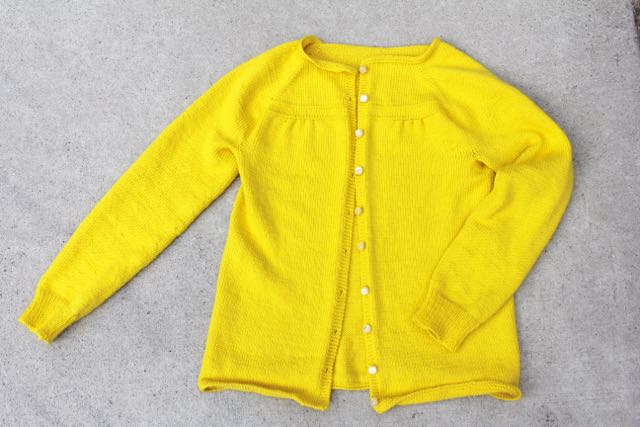
Is that how blocking works? Because I haven’t ever done it before. My very first sweater I finished except for the second pocket, but it’s short on me and SO thick, so I never blocked it. My second sweater is all done except the ribbed band, and is waiting for me to go back and finish it because ribbing isn’t really my favorite and there was a LOT of ribbing on that one.
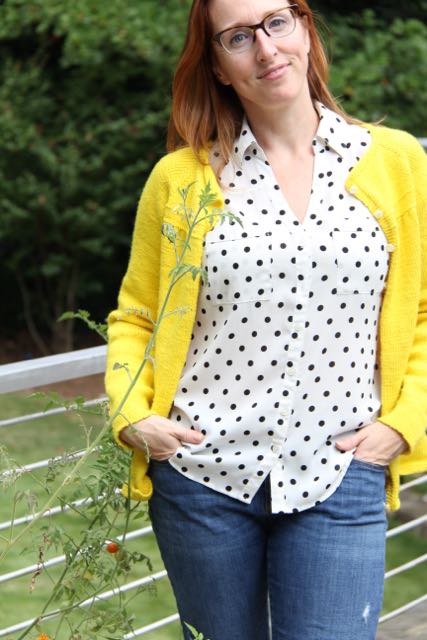
This is my third sweater, and I love it so much. Love, love, love it. And I’m afraid to mess it up.
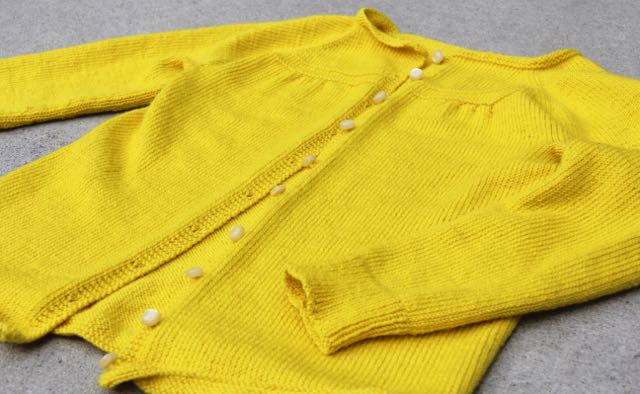
So that’s the question: does it mess it up more to NOT block it, or to block it? And what will be the long-term effect of either choice? From what I’ve read, blocking is all about making the yarn “bloom” and opening up the fibers into the space between the stitches. And it seems to have something to do with helping the sweater have the right measurements and shape? But my sweater already has the right measurements and shape–and I love it. So does that mean I can (or should) skip dunking it in water and then pinning it to a foam board to dry?
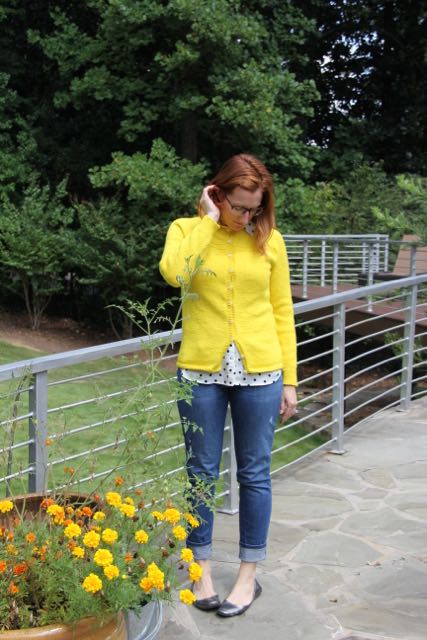
The pattern is the Georgia cardigan by Jane Richmond. It’s really written for a sock yarn, but I used Mulberry Merino from Purl Soho (purchased last spring when it was 40% off–BOOM), even though I knew it was a thicker yarn. The silk content makes it so indescribably soft–like, to the point that I finally understand what people mean when they say “luxury yarn,” and that I’ve been realistically spoiled for any other yarn ever.
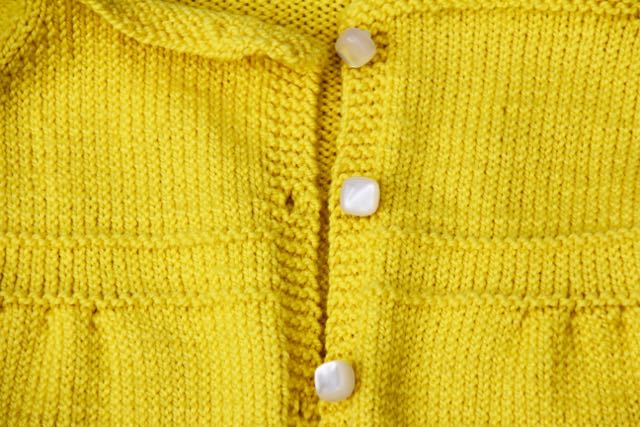
The design includes some sweet details that make it just different enough from a “plain” cardigan, like these teensy gathers on the upper fronts, which are repeated at center back:
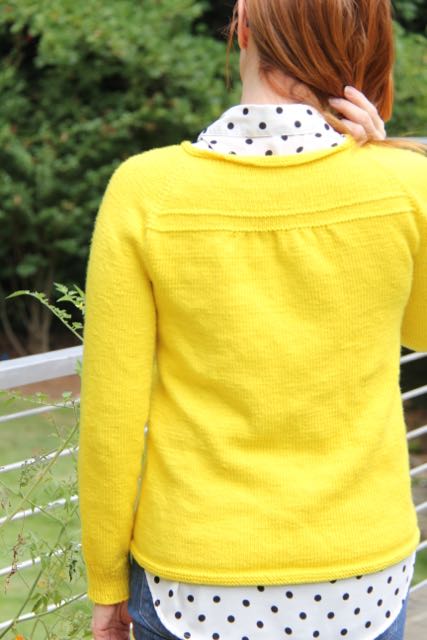
There’s also a single row of garter stitch above the gathers that I made into two rows, because it’s fun and I have the POWER.
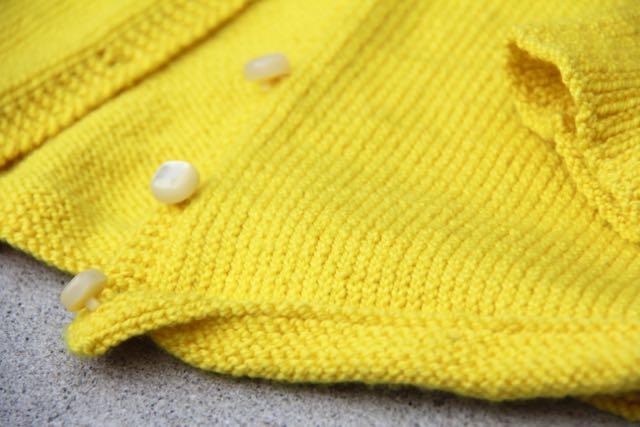
The front band and hem are in garter stitch, which I love–so simple and clean but you still have a clear sense of where the sweater “starts,” you know? And I made buttonholes!! And put on buttons!! I feel amazing. But see how the hem curls up? The neckline does that, too, and that’s one of the things I wonder about the blocking: I’m guessing if I block it right, that I can eliminate the curl–kinda like pressing a curved seam or hem, where even after you’ve worn and washed it, somehow the fibers have been “trained” and remember the shape you want them to have.
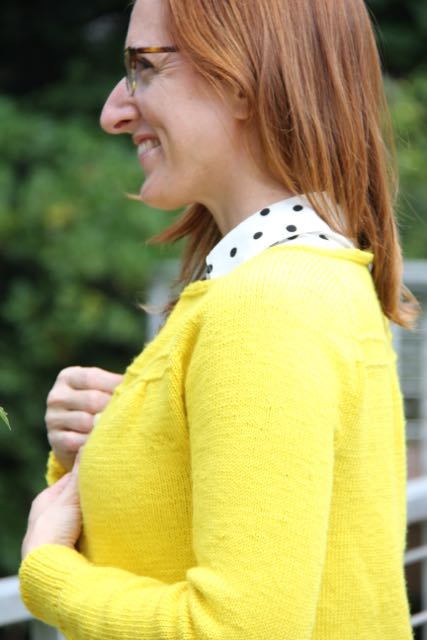
The whole sweater was knitted from the top down, which is the only way I know how to make a sweater so far. I’ve never had to do any seams or anything like that. I understand better why people would, now, though. Used to be, I wondered why you’d EVER bother to do seams when you could just knit from the top down–but now I see that the sweater can get kinda heavy and bulky. It was a lot to pull out of my purse during church and get to working on, I can tell you, and I certainly got the hairy eyeball once or twice when this bright yellow monster landed in my lap.
Suck it, non-knitters. My needles, my party.
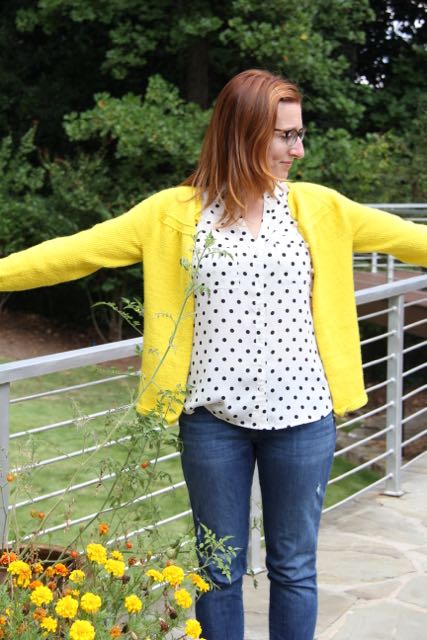
The fit on this is pretty spectacular. I had a near-heart attack 1/3 of the way through when I thought I’d done some sketchy knitting math, imagining that because I’d used a different yarn it was going to end up way, way smaller than the pattern. But then I literally crunched the numbers and saw I was in the clear, and that if anything, it would come out bigger. I made the size 36, since the pattern is designed to have some negative ease, and since I was getting 25.5 stitches per inch instead of the 26 the pattern called for, it’s a little less fitted in a good way. This will be a good, close-fitting but not tight piece for layering this fall and winter.
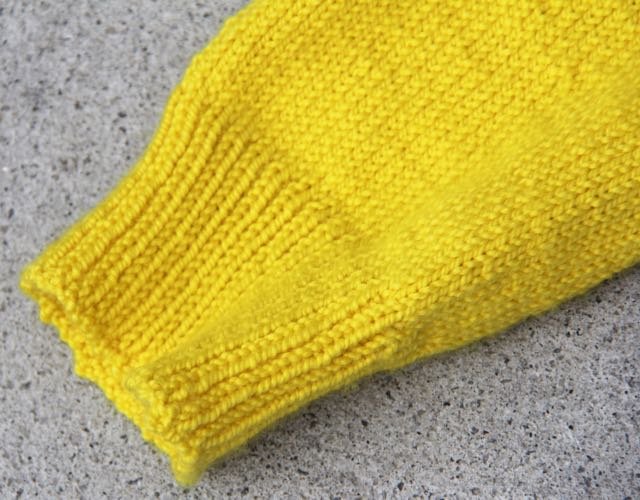
The sleeves are full-length, which I like, even though I almost always push them up. I didn’t love knitting the 1×1 ribbing, but man, it’s just gotta get done sometimes. And the color was so stupendous on this yarn, so rich and deep and vibrant, that I would have leapt buildings for it. Seriously. (I am firmly of the belief that we should all embrace our signature color and can proudly say that I now match at least one sofa in my house.)
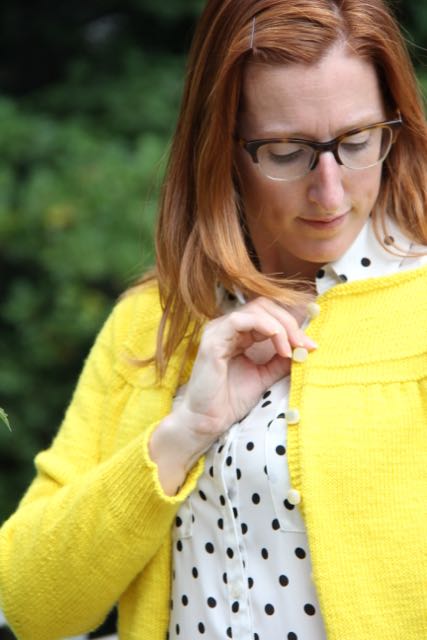
You know how I said before that knitting taught me humility? And reminds me of what it is people are experiencing when they learn to sew–because I learned to sew so long ago, that I don’t really remember? That’s how I feel about this sweater. I feel like I want EVERYBODY to know I made it. I want to stop strangers on the street and make them touch how soft the yarn is. I want to show it off ALL OVER the place. It’s invigorating to feel so excited about something I’ve made by hand again–and that’s bleeding over into my sewing, which is an unexpected consequence of spending so much time working on one garment.
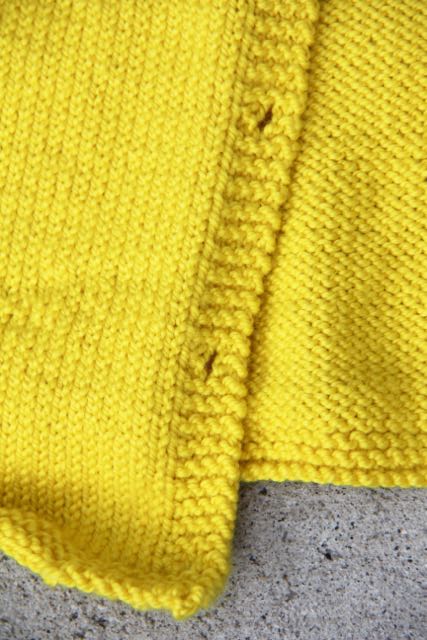
I’m not an expert knitter. I don’t claim to be–it’s my third sweater, for heaven’s sake! Look at this lower edge, for example: I did the weaving-in-the-ends thing, and I think I didn’t do it too well, because you can see it from the right side. See there on the left in the center, opposite the buttonhole? I’ve read that people think if you take only one formal knitting class it should be a finishing class, and I’d love that–if I could just find one in my area.

So now you see my dilemma. I’m really excited about my sweater (do you love my dorky trying-to-take-a-leaping-photo photo? tragic), and I don’t want to spoil it. Will the blocking hide the mistakes from the weaving in, and make it “bloom” the way all the yarn reviews say, or am I running the risk that I’ll ruin it by dunking it in water?
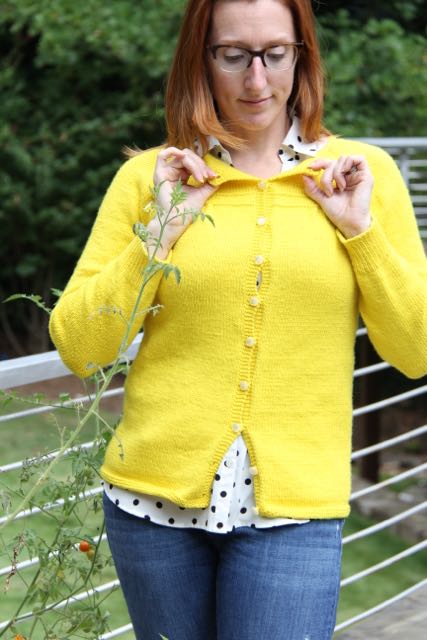
More to the point, is blocking a place where it’s OK to lazy out and just skip it? Or is it an essential step to your garment knitting??

Thanks for your suggestions, expert knitters!! Also: hooray for handmade sweaters!!

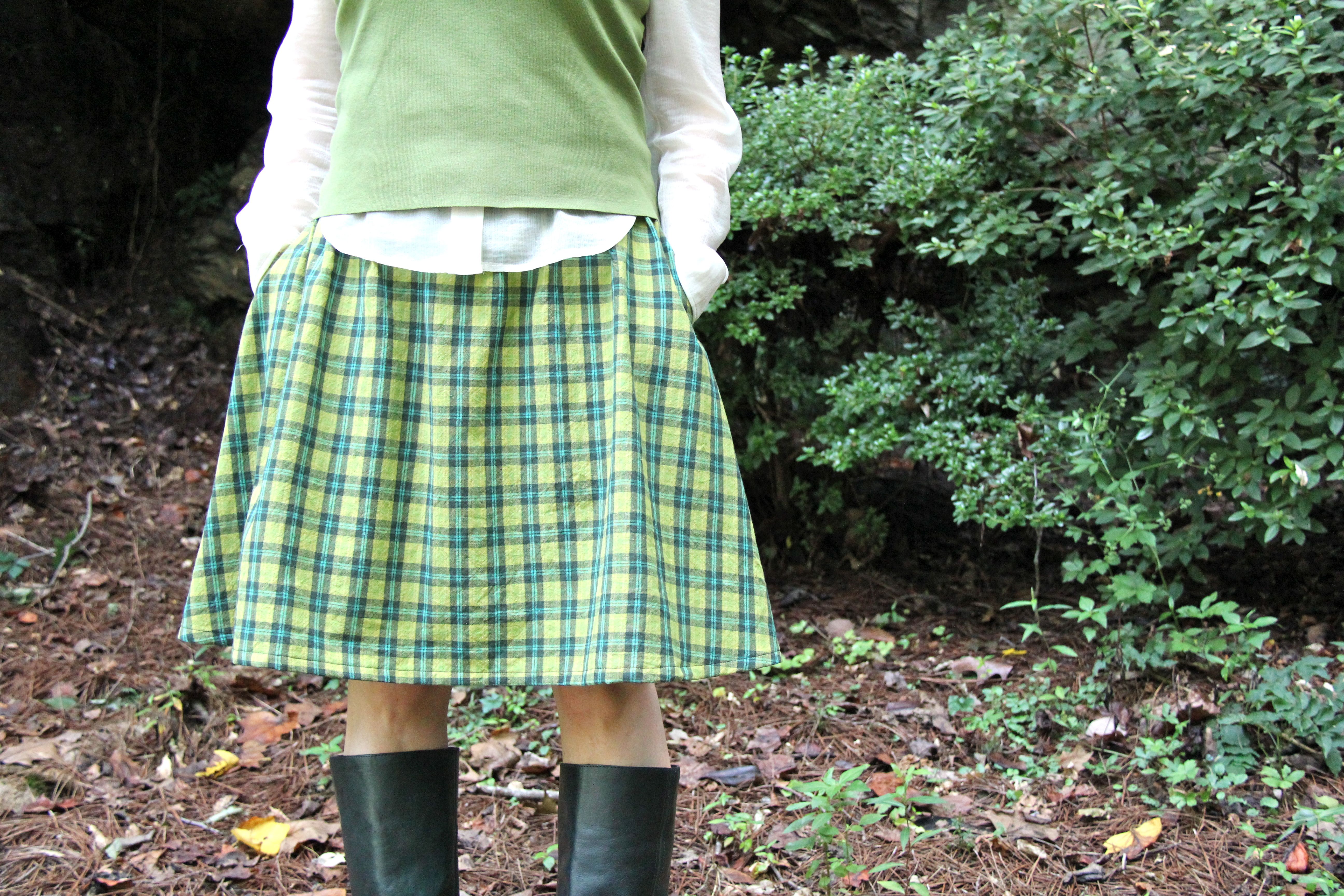

Samina
September 7, 2016 at 3:45 pmYour sweater is gorgeous! Go you, you should be mighty proud of it!
Re: blocking – I don’t block socks. In my world, they get blocked after getting washing & getting put on my feet. I do block sweaters, shawls & almost everything else, though. Stuff gets dirty being dragged around while it’s being knitted, so I like to clean it before I wear it. I also find that blocking helps the stitches even out & yes, it does help the yarn fibers bloom. If you do knit sweaters in pieces, it also helps to keep the edges from rolling while you’re seaming them, so you might want to block before assembling.
I hope you’re blocking your swatches. You could be in for an ugly surprise if your finished garment does something unexpected the first time it’s washed.
Just dunk your sweater in some water & woolwash (Soak, Eucalan, etc.) & follow the instructions all over the internet. Make sure you’re washing the yarn per the ball band instructions, or you might regret it.
Welcome to the luxury fibers – yarn snob fan club, too. It’s hard to go back to the crap yarn once you’ve used the good stuff.
Charlotte Newland
September 8, 2016 at 2:58 amIt’s so beautiful – I love LOVE the colour! Blocking will definitely make a difference to that rolling you’re seeing. I know it seems like a pain, but it’s so worth it! It’s not so bad, really. Give it a dunk in Soak Wash (love that stuff), roll it in a towel to get most of the water out, and then dry it flat. There’s usually no need to pin out a sweater – just pull it into shape, just like you would after washing it. Go on! Give it a try 🙂
Kristine
September 8, 2016 at 8:29 amI wash my sweaters, let them dry flat and maybe pat them into shape. Every time they needs a wash. I mostly use the washing machine because it has a very gentle wool program.
woollythinker
September 8, 2016 at 9:03 amGreat job! Your ribbing in particular is so neat for a newbie. (Btw you might try learning continental-style knitting, holding the yarn in your left hand – it makes ribbing, seed stitch etc very much less tedious, because it’s so much easier to flip between knit and purl.)
Wet blocking is a super useful step but no, it’s not always essential. If you’re happy with the shape and the stitches (you should be, it looks great!) you can skip it. Agree with the comment above though, personally I always like to wash a sweater once it’s done, since my hands sweat while I knit… Don’t think blocking, think laundering, and just let it dry flat. Pinning out to specific measurements is helpful, say, before seaming a garment, but totally not necessary if it’s already in good shape. As for the rolling hem, you can block that out temporarily, but it will roll again later, unfortunately.
ALSO 1) I often just steam things instead of wet blocking them; it’s extremely effective and way less faff. 2) Seaming can also help garments hold their shape. Just fyi. 3) If you can’t find a finishing class, buy Deborah Newton’s excellent book Finishing School.
Emily
September 9, 2016 at 2:50 pmIt looks so, so great! I am a fairly new knitter of sweaters and agree with others that blocking isn’t necessary, but if you are ever going to wash it you will see some of the effects of blocking anyway. Also, I have had some regrettable experiences not blocking knit items made with a dyed yarn and ending up with the dye rubbing off on other garments, especially in armpits, etc. If your yarn has wool content, using a soap (like Soak) that will add some lanolin back into the mix will soften the fiber even more.
Mary Beth
September 15, 2016 at 12:56 pmFor something this nice, I would not skip blocking. The places that it really helps are on the edges, especially where the pattern changes. The garter stitch on the bottom should keep that from rolling, and blocking will help that. (If it doesn’t, you might want to go back and add a couple more rows of garter.
Angela
January 1, 2017 at 9:02 amI ABSOLUTELY LOVE your sweater. The color is GORGEOUS! Bright. Vibrant. Brilliant……. That being said, I know nothing about blocking. I was just trying to figure out, like you, if I should block my own project or skip it. But it seems like I should. I just wanted to say how much I LOVE your sweater. Congrats on a finished sweater. 🙂
Hand-Knitted Socks | Whipstitch
August 14, 2017 at 12:03 pm[…] reason, getting the in-the-round thing going was super tricky for me, even though I’d done it before. Finally, I got it going and started my first pair: Hermione’s Everyday Socks, which I […]